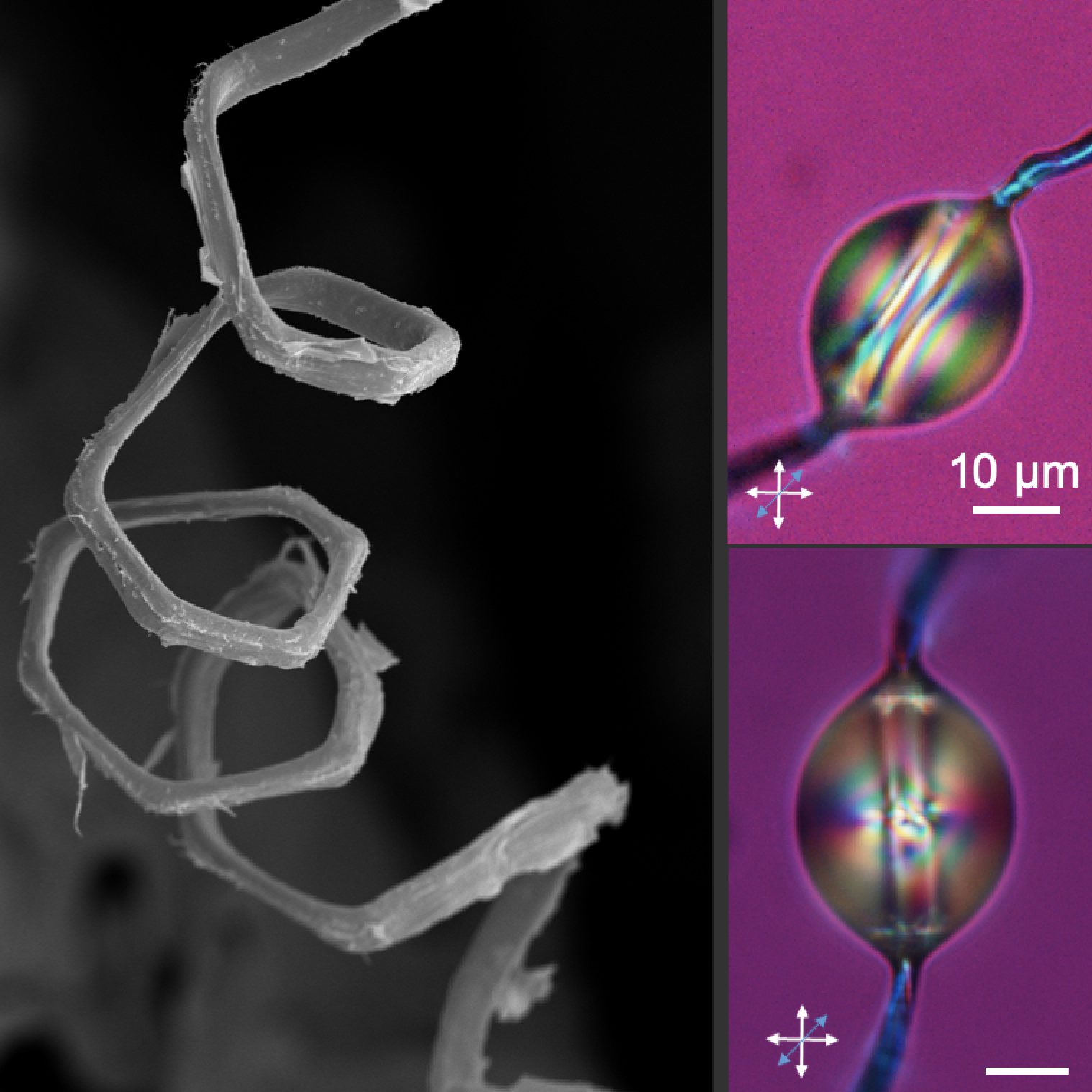Microfibers existing in the tracheary systems of plants are crucial for the plants to survive. These microfilaments are curled up, forming left-handed helices that make the contour of tubes responsible for the transport of water and nutrients from the roots to the leaves. The microfilaments present mechanical properties that vary from plant to plant despite having similar polygonal-helical shapes and cellulose skeletons. Here we show that the surface morphology of the microfilaments, sensed by nematic liquid crystal droplets, is at the origin of entanglements, which are responsible for the mechanical behavior of microfilaments. This work introduces routes for the accurate characterization of plants’ microfilaments and to produce bioinspired textiles.
Download “Article” Spotting_Plants_Microfilaments.pdf – Downloaded 329 times – 1 MB
Download a copy of the manuscript

